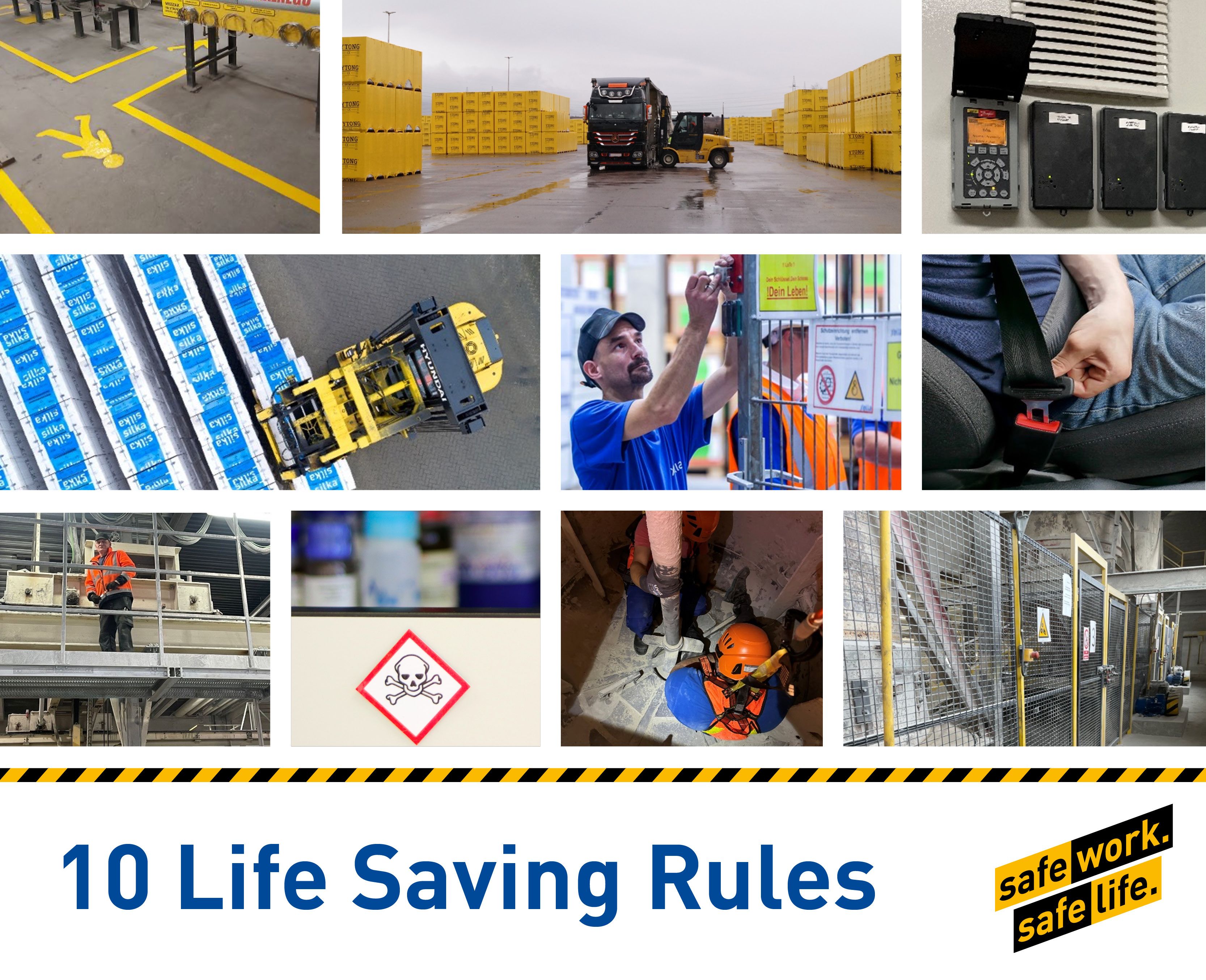Implementing Life Saving Rules: how Xella turns safety into daily practice
At Xella, safety is not just a checklist, it’s a mindset. Across our international operations, our plants committed to a bold vision: “We create safety.” This vision is embodied in our Ten Life Saving Rules (LSR), which are designed to prevent the potentially most severe incidents in our workplaces. But what does it take to implement these rules effectively across different countries, cultures, and technical environments?
The answer lies in a combination of data, dialogue, and determination.
From insight to action: choosing the right rules
Our journey began in 2017, when our Corporate EHS team conducted a comprehensive analysis of our incident data, organizational structures, technical processes, and safety culture. The goal was clear: identify the most critical risks, not just the most frequent ones, and address them with targeted, actionable rules.
The result was a set of ten Life Saving Rules, ranging from electrical safety and mobile equipment handling to confined space entry and hazardous material management. These rules reflect the real-world challenges our teams in the plants face and are designed to protect lives.
A phased, people-centered rollout
Implementation started with five core rules, including Lockout/Tagout (LOTO), external transport safety, and traffic route concepts. Over time, we expanded to eight, adapting each rule to local needs and conditions while maintaining a consistent group-wide standard.
For example, while regulations around working at heights vary across countries, Xella applies a unified standard: safety measures kick in at just one meter from ground level. This ensures clarity and consistency across all sites.
Training that sticks
Rolling out a rule is one thing—embedding it into daily practice is another. That’s why we use a train-the-trainer model, starting with EHS managers who then cascade the training locally. For complex topics like Lockout/Tagout (LOTO), selected employees receive intensive, hands-on instruction. Furthermore, every employee, regardless of their role, is informed of the “why, how, and what” of each rule. It has also proven effective to provide clear materials – from posters and brochures to digital templates – and launch each rule with a dedicated kick-off event, often involving site tours and practical demos.
Technical and organizational change
Implementing a Life Saving Rule often also requires technical upgrades and process redesigns. Whether it’s installing new safeguarding solutions for machines or redesigning traffic routes within a plant, to ensure that safety is built into the infrastructure. In some cases, the changes are profound. In one plant, for example, efforts are underway to eliminate ladders as tools of choice for all maintenance activities, embracing the vision of “Zero Ladders” as part of its safety culture.
Empowering a safety culture
Perhaps the most powerful aspect of our approach is the training and coaching of our line managers, to promote and build a strong and resilient safety culture. By asking our employees for their input, we get a chance to listen, to learn and to empower everyone of our people. This has led to a noticeable shift: our plants have become more confident, more independent, and more innovative in their approach to safety.
The 10 Life Saving Rules at Xella
Traffic Route concept
External Transports
Electrical Safety
Mobile Equipment
Lockout/Tagout
Safe Driving
Working at Heights
Hazardous Material management
Confined Spaces
Machine Safety
